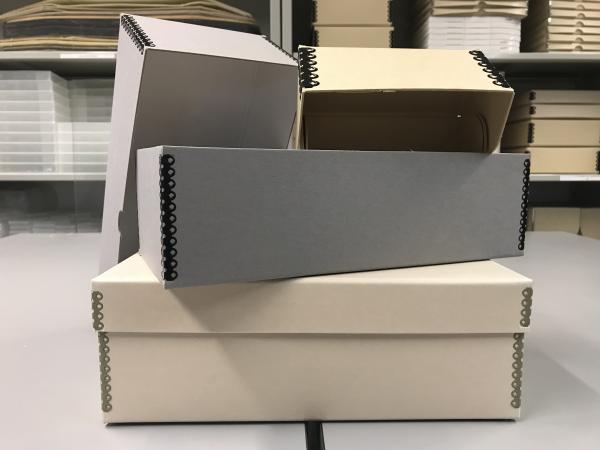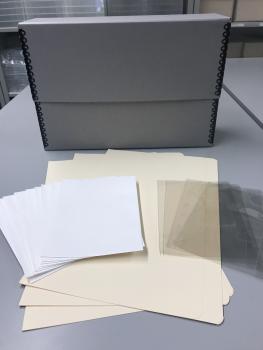It’s that time of year again when we get together with our families to celebrate the holiday season. These visits can be full of delicious food, warm company, or sugar-filled children, but they can also be a time to reminisce and look at our family photos and heirlooms. The Archives is always receiving inquiries about the best practices for preserving personal collections, and we want to highlight a few quick tips to keep in mind as you’re weeding through those old, dusty boxes.

1. Keep your heirlooms out of the basement and the attic.
It’s hard to find a spot for all of those photographs, books, documents, and home movies, but if you want to extend their lifespans, it’s best to keep them in an environmentally-controlled area at home. Temperature and humidity can do a great deal of damage to your collections if not kept in check. High temperature and humidity can lead to distortions in books, swelling of the emulsion layer in films and photographic prints, and mold on most materials, while low temperature and humidity can cause some materials, such as adhesives and paints, to become brittle. You should always look to maintain the relative humidity around 50%.
2. Rehouse your collections into acid-free, chemically-stable materials.
For paper-based materials, photographic prints, slides, and textiles, you should consider removing them from acidic containers such as cardboard and poor-quality enclosures. Look for new boxes and folders that are “acid-free” and won’t contribute to the deterioration of your collections, and even consider enclosures that are “buffered.” Buffered materials contain an additive that can help to preserve some materials for even longer. For photographic negatives and audiovisual collections, you should stick to acid-free, unbuffered materials. For select suppliers for preservation suppliers, stop by our Storage and Handling webpage.
3. Consider arrangement when rehousing.
It may not make sense to store all of your collections based on medium. Think about how these items relate to one another. Does it makes sense to arrange your heirlooms by subject or by years? Should the negatives be kept with their corresponding prints? Each collection is unique in terms of content and medium and will be accessed in different ways, and its arrangement should reflect that.
4. Curation is not just for cultural heritage institutions.
I’m just going to say it – every item is not worth saving. (Gasps from the crowd.) This can come as a shock and it can be hard to throw away what feels like your family heritage, but you should feel confident to make decisions regarding what to retain in your collection. If you have ten copies of what is seemingly the same photograph, you may want to consider disposing of some of the blurry, over-/underexposed, or duplicate images.
5. Digitization for preservation.
It’s inevitable that many of our family herilooms will degrade to a point that they’re unreadable, unplayable, or unidentifiable. Digitization can be an option to preserve the content on many carriers, such as paper, books, photos, and audiovisual items. If you choose to digitize your collection, be sure to check out our webpage on reformatting to make sure that you’re using the best standards for imaging. Once digitized, you’ll be able to view and share these files with family, thus reducing handling of the originals. It’s a win-win!

Managing your family heritage can be overwhelming, but it doesn’t have to be. Start with one box, one folder, or one scrapbook. Take your time and enjoy getting to know your family either all over again – or for the first time!
Related Resources
- “Thanks(giving) for the memories—a preservation family project,” by Nora Lockshin, The Bigger Picture, Smithsonian Institution Archives
- “Family Memories at Thanksgiving” by Pam Henson, The Bigger Picture, Smithsonian Institution Archives
Produced by the Smithsonian Institution Archives. For copyright questions, please see the Terms of Use.

Leave a Comment